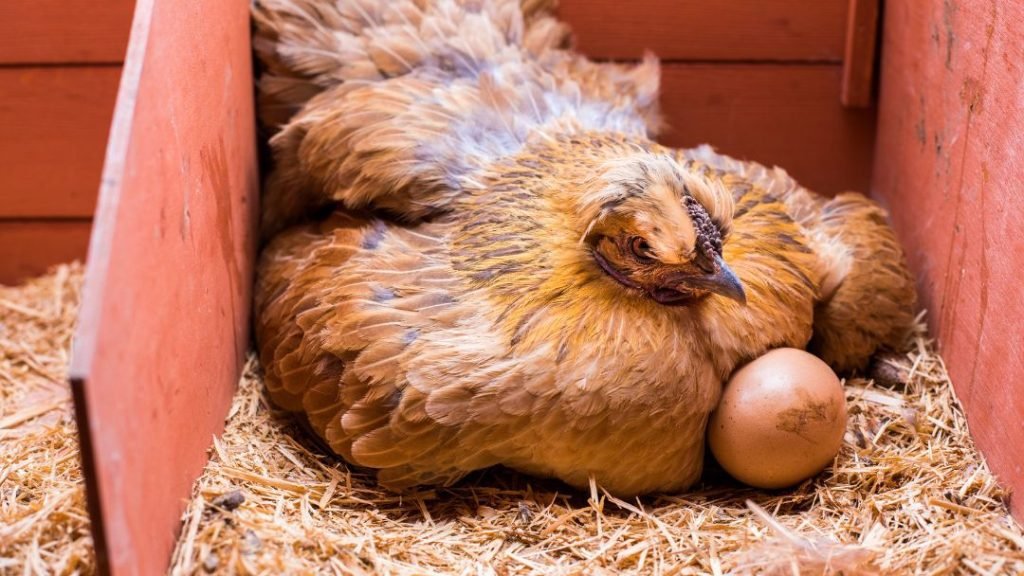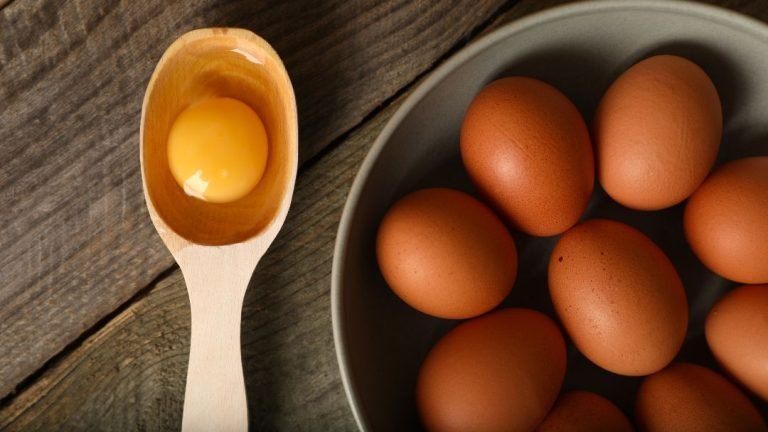Chicken eggs are fragile. They carry lives in their eggs. But carefully handling them is necessary to hatch successfully. Compared to older hens, younger hens lay better quality eggs that are easy to hatch. However, fertile eggs are a must for hatching. But how to identify fertile eggs?
One of the most common ways to identify fertile eggs is by cracking or opening eggs and seeing their internal physical conditions. Their yolk color, shape, and size will differ slightly from unfertile eggs. Other options are candling and floating the chicken eggs.
Why Are Fertile Eggs Necessary For Hatching?
Fertile eggs are alive. They have many living cells. Each living cell contains cytoplasm and mitochondria.
Cytoplasm is a stockpile of cellular material with nutritional reserves in the form of yolk. It contains polysaccharides, lipids, and proteins.
The embryonic metabolism upon fertilization can’t be completed with the cytoplasm. It also holds each cell’s elements and protects them from getting damaged.
In contrast, the mitochondrion is a double membrane-bound organelle. It provides the developing embryo with energy in the form of ATP (adenosine triphosphate).
As the embryo grows, it requires more energy to support its development.
Mitochondria, which are organelles that produce energy in cells, are located in the egg cell’s cytoplasm and provide the developing embryo with the energy it needs to grow and hatch.
It also plays a crucial role in regulating the temperature of the developing embryo.
They produce heat as a byproduct of ATP production, which helps to maintain the optimal temperature range for embryo development.

How To Identify Fertile Eggs?
You can identify fertile eggs by using several methods. The followings are the top four popular approaches to determine whether the eggs are fertile or not.
Method 01: Opening The Chicken Egg
One of the common ways to identify a fertile egg is to inspect its germ spot.
It is usually the white spot of a yolk and contains the genetic material necessary for embryo development.
An infertile egg has only female’s cells in its germ spot. It appears as a stable white spot and is located above the center of the yolk.
On the contrary, a fertile egg contains both female and male cells necessary for developing a viable embryo.
Its germinal spot is larger than infertile eggs because it contains genetic material from both the male and female gametes. Also, a yolk has a full circle shape with a bullseye appearance.
Method 02: Candling The Chicken Egg
Another effective way is incubating the chicken egg and then keeping it in front of a candle or intense light to see its internal condition.
After incubating the eggs for a few days, bring them to a darker room. Then, turn on a candle or a powerful light illuminating incubator
The bright light will help you to observe how much an embryo develops and grows inside the egg. Make sure to use a good-quality candler to see the movement clearly.
But how does candling reveal if an egg is fertile? The shape, color, and opacity of the egg content will tell whether the egg is fertile or not.
A fertile chicken egg will have a small dark reddish area with numerous blood vessels.
However, an infertile egg won’t have any such signs. Instead, it will have a dark ring and appear clear without any blood streaks.
You will see a slight shadow cast by the yolk. Candling infertile eggs also reveal cracks in the eggshells. Make sure to discard incubated infertile eggs as they are suitable for eating.
Method 03: Floating The Chicken Egg
If a chicken egg floats on the water, it is more likely to be infertile. But you must be wondering why the egg floats, right?
The egg does not have enough large internal elements. Plus, water has increased density than air. So, its reduced weight makes it less likely to sink.
Performing the float test on newly laid eggs is not practical. They must be at least a few days old.
Let them grow and develop embryos gradually within a few days. Also, don’t be too late to test the eggs. Otherwise, you may hurt the chicks if the eggs are fertile.
Bring a bucket of warm water. Make sure the water is deep enough to cover the egg fully. There should not be any currents or disturbances to get an accurate reading.
Place each egg carefully. Avoid adding eggs carelessly, as they are pretty fragile. Let them sit for a few minutes to figure out their current conditions.
If the eggs sink, immediately keep them inside the incubator. However, the accuracy of the egg float test is not 100% guaranteed.
Method 04: Embryo Development Charts
Another way to determine the eggs’ fertility is by using embryo development charts to track the growth of their fertilized eggs.
You can get embryo development charts from hatcheries, poultry supply stores, and online.
The first substantial job is determining the date of fertilization. Note down this date.
Over the next several days, observe the egg’s development.
Look for signs of embryo growth, such as veins forming on the egg’s surface and changes in the size and color of the embryo.
Compare the appearance of the egg to the development chart to estimate the embryo’s age.
The chart will show you what the embryo should look like at various stages of development.
The egg is likely fertile if the embryo is developing normally and appears to be healthy. The egg is likely infertile when the embryo is not growing or seems abnormal.
Is It Safe To Eat Fertilized Eggs?
Eating fertilized eggs is entirely okay. The primary difference between fertile eggs and infertile eggs is the sperm in fertilized eggs. The rest of the things are the same.
You can effortlessly identify fertilized eggs through the presence of a small white spot on the yolk called a blastodisc.
The taste and look of fertilized eggs and unfertilized eggs are the same.
They even don’t differ in their nutritional value. You can’t tell the difference by eating them.
If you plan to incubate fertilized eggs to hatch chicks, it is crucial to handle them carefully and avoid eating them to ensure the best chances of successful hatching.
Is It Safe To Eat Unfertilized Eggs?
Unfertilized eggs are entirely safe to eat. In fact, the vast majority of eggs that are sold for human consumption are unfertilized.
They contain all the same nutrients as fertilized eggs.
However, some people may find some unfertilized eggs have a slightly different taste or texture than unfertilized eggs.
As long as you properly handle and cook the eggs, it is safe to eat regardless of whether it is fertilized or not.
Can You Eat Slightly Incubated Eggs?
If the fertile egg is partially incubated, it is best to avoid eating it. There might be some bacterial problems inside the eggs.
During the incubation process, the eggs are incubated at nearly 100 degrees for a few days
High heat may make the eggs bad. If you see a good amount of embryos inside the eggs, throw them away.
But if the incubation period proceeds only for one or two days, the eggs might be edible.
Perform a float test to become 100% sure about it. If the eggs float, dispose of them. But if they sink, you can eat them.
Avoid eating any incubated eggs that have passed more than two days. Baby chicks might have already developed inside it.
How To Get Fertile Chicken Eggs?
Getting fertile eggs from hens requires introducing roosters. A rooster can handle up to 12 hens.
If you have around 20 hens, make sure to keep two roosters to avoid letting them struggle to fertilize the eggs.
The rooster will mate with each hen for a few seconds and release sperm into the oviduct, a sperm storage organ. The sperm will last anywhere from 2 to 15 weeks
Hens will start producing fertile eggs for at least a couple of weeks. The duration can be higher if roosters re-mate with hens again.
How Long Does It Take To Get Fertile Chicken Eggs?
It generally takes around 4 days on average to produce fertile eggs after roosters mate with hens.
Hens can keep producing fertile eggs for up to 21 days after a single mating.
When a rooster mates with a hen, the female chicken retains the sperm for up to three weeks.
However, regular mating is necessary. Otherwise, the fertility of the eggs will start reducing after the 10th day.
But how many fertile eggs can a hen lay from a single mating? A healthy hen can lay around 5-6 fertile eggs from a single mating. It can be as high as 9-10 eggs in some cases.
Tips For Producing Fertile Eggs and Maximizing Hatch Rates
Chicken keepers can be more successful in hatching by following some pro techniques.
The following are some top tips to increase hatchability chances.
01. Select High-quality Chicken Breeds
To produce fertile eggs, you need healthy, well-nourished breeding stock. Choose broody hens with good genetics, strong immune systems, and no genetic defects.
Silkies, Cochins, Buff Orpingtons, Brahmas, Orpington, Plymouth Rock, Sussex, etc., are top broody hens. They are perfect setters and ideal for sustainable flocks.
Make sure to provide them with a nutritious diet and appropriate living conditions to ensure optimal fertility.
02. Optimize Mating Ratios
Aim for maintaining a mating ratio of 10 to 12 hens per rooster for best results. You can keep Leghorns and Fayoumis.
This ensures that each hen has a good chance of being fertilized without the rooster becoming overworked or stressed.
However, there should not be too many roosters. It may otherwise cause excessive mating, and roosters may continuously fight among them.
03. Handle Eggs Carefully
Maximizing the hatch rates requires handling the fertile eggs carefully. Avoid storing them in too much hot or cold temperatures.
You should also avoid subjecting them to sudden temperature changes or rough handling.
Collect eggs frequently, and store them properly. Make sure to incubate the eggs within 24-48 hours for the best result.
04. Use A High-Quality Incubator
Temperature, humidity, gaseous environment, and turning the eggs on time are some most important factors for successful hatching.
A well-functional incubator can increase the hatchability of fertile eggs.
Look for an incubator that maintains a consistent temperature and humidity level and good ventilation and turning mechanisms.
05. Monitor Incubation Conditions
Monitor the temperature, humidity, and other incubation conditions carefully throughout the process to ensure the embryos develop properly.
Make adjustments as needed to optimize hatch rates. But the hassle will be less if you buy an auto incubator. It will adjust the temperature and other settings automatically.
Bottom Lines
If you want multiple chicken numbers, ensure your hens lay fertile eggs. Knowing how to identify fertile eggs is crucial.
Sometimes, your female chickens might be sick. They may not produce fertile eggs even after regular mating with roosters.
Perform a health check-up for hens at least once per month. This will help you figure out what problems they have.







